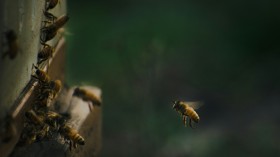A study defines the importance of the sense of smell and a dog's nose to dog vision.
Although it is unknown how dogs perceive smell and vision working together, the discovery suggests that dogs' vision and smell are somehow integrated.
Dogs are renowned for their capacity to locate and track objects using their sense of smell. It has since been discovered that they develop this talent using unique brain structures connected to their visual system.
According to a recent study in the Journal of Neuroscience, dogs are the only species where the senses of sight and smell are connected in the brain.
Philippa Johnson, the senior author of the study said that The connections between the nose and the occipital lobe, which contains the visual cortex, are what this study is most notable for. Johnson is a veterinary neurologist and an associate professor at Cornell University's College of Veterinary Medicine.
Studying 23 Dog Brains
She and her colleagues looked at MRI scans of the brains of 23 dogs, which revealed neural connections between their occipital lobe, which processes vision, and their olfactory bulb, where smells are recognized.
Johnson pointed out that although other animals that rely heavily on scent may have something similar, humans, who primarily rely on vision, do not.
Also, although it is unknown how dogs perceive the two senses working together, the discovery suggests that dogs' senses of smell and vision are somehow integrated.
Johnson said that dogs' visual cortex is influenced by scent, but it's difficult for the team to understand what the dog has gone through. She does believe that the dogs can use scent to determine where things are, though.
Read also: Dogs' Secret Tool to Save Wildlife
Seeing with Dog's Noses
Johnson explained that when people enter a room, their primary sense of sight is used to determine who is present and how the furniture is arranged. However, dogs appear to use scent to interpret their environment and determine where they are in it.
That is supported by the behavior of blind dogs, who don't appear to be significantly affected by their loss of vision.
She continued by saying that one of the local hospital's ophthalmologists frequently has dog owners bring their pets in, and when he analyzes their eyes, the dogs are blind, but the owners literally won't believe him. The blind dogs behave normally at all times. They don't run into things, and they can play fetch or navigate their surroundings.
Their study prompts more research on other animals' brains, including those that heavily rely on smell, like cats and horses, is being planned by Johnson and her colleagues, NBC News reports.
According to VCA Animal Hospitals, a dog's nose has more capabilities than just sniffing around. Dogs spend a lot of mental energy deciphering smells. Compared to 6 million in humans, they have over 100 million sensory receptor sites in the nasal cavity, and the canine brain's olfactory cortex is about 40 times bigger than the corresponding region in the human brain. Dogs are thought to have a sense of smell that is 1,000-10,000 times greater than that of humans.
Related article: Canines Can Detect COVID-19 Through Sniffing?
© 2024 NatureWorldNews.com All rights reserved. Do not reproduce without permission.





